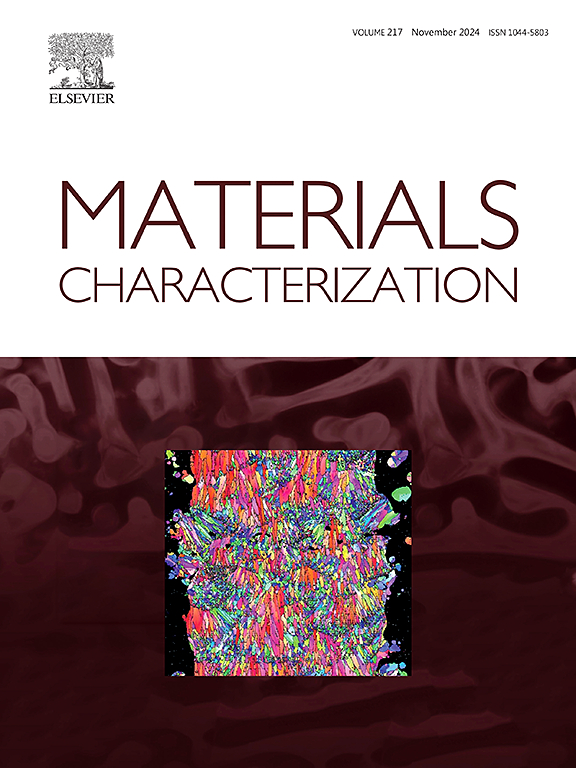Elucidating hierarchical microstructures in high entropy superalloys: An integrated multiscale study
IF 4.8
2区 材料科学
Q1 MATERIALS SCIENCE, CHARACTERIZATION & TESTING
引用次数: 0
Abstract
In this study, we examine a high entropy superalloy (HESA-Y1: Ni49.37Co20Cr7Fe4Al11.6Ti6Re1Mo0.5W0.5Hf0.03 at%), focusing on hierarchical microstructure formation and its effects on mechanical properties. Thermodynamic modeling using Thermo-Calc predicts equilibrium phase fractions, compositions, and transition temperatures, which are validated by experimental data from differential scanning calorimetry (DSC). Transmission electron microscopy (TEM) reveals that secondary aging induces nanometer-sized γ particles within γ' precipitates, forming a hierarchical γ/γ' microstructure. Atom probe tomography (APT) confirms supersaturation of γ' precipitates with γ-forming elements (Co, Cr, Fe), driving γ particle formation, and measures interfacial widths between γ' and γ phases. Partitioning coefficients derived from APT align with Thermo-Calc predictions for most elements. Vickers microhardness testing shows an increase of about 50 HV in the hierarchical microstructure compared to the conventional one. In situ synchrotron X-ray diffraction (XRD) from 25 to 750 °C determines a small, negative lattice misfit δ between γ and γ' phases, suggesting enhanced microstructural stability, consistent with Thermo-Calc calculations. Our methodological approach enables measurement of the unconstrained lattice parameter of phase-extracted γ' in a single-crystal XRD setup. Due to their small size and low volume fraction, γ particles do not produce distinct reflections in the X-ray diffractogram. Elucidating hierarchical microstructures across multiple scales, we establish that the presence of Re and Hf and controlled aging processes lead to enhanced mechanical properties, offering valuable insights for the design of advanced high entropy superalloys.
求助全文
约1分钟内获得全文
求助全文
来源期刊

Materials Characterization
工程技术-材料科学:表征与测试
CiteScore
7.60
自引率
8.50%
发文量
746
审稿时长
36 days
期刊介绍:
Materials Characterization features original articles and state-of-the-art reviews on theoretical and practical aspects of the structure and behaviour of materials.
The Journal focuses on all characterization techniques, including all forms of microscopy (light, electron, acoustic, etc.,) and analysis (especially microanalysis and surface analytical techniques). Developments in both this wide range of techniques and their application to the quantification of the microstructure of materials are essential facets of the Journal.
The Journal provides the Materials Scientist/Engineer with up-to-date information on many types of materials with an underlying theme of explaining the behavior of materials using novel approaches. Materials covered by the journal include:
Metals & Alloys
Ceramics
Nanomaterials
Biomedical materials
Optical materials
Composites
Natural Materials.
 求助内容:
求助内容: 应助结果提醒方式:
应助结果提醒方式:


